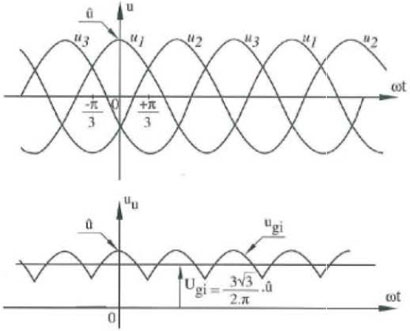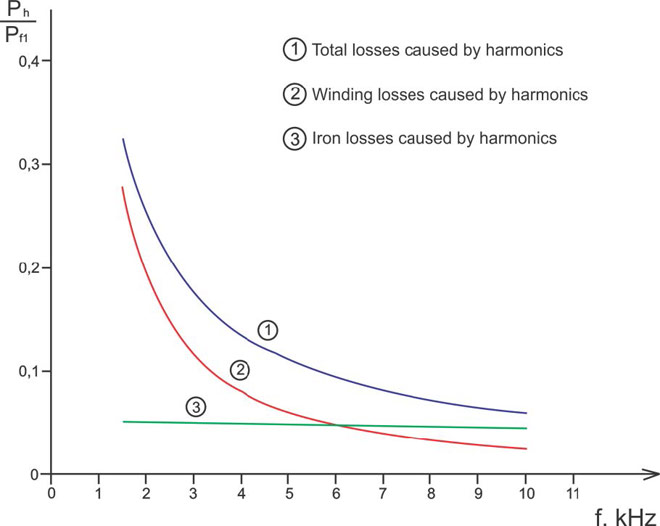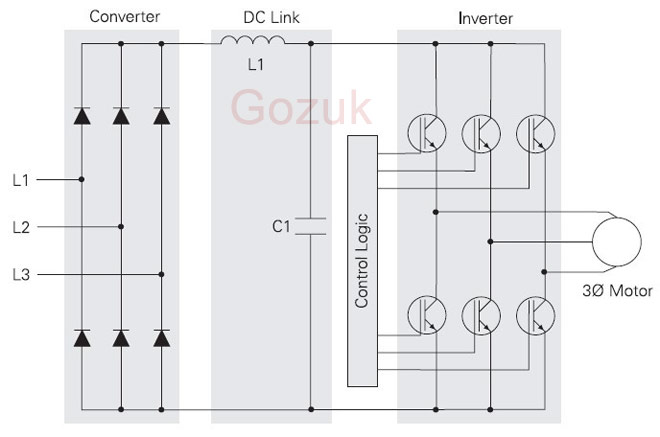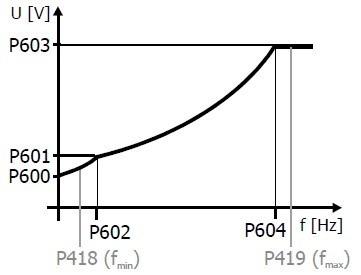The environmental factors affect VFD reliability
The reliability of power electronic systems, including variable frequency drives, depends on certain environmental limits being maintained. These limits relate to maintaining the efficient extraction of the heat due to switching losses so that no single component within the VFD is subjected to an over-temperature condition. Over-temperatures will result in the reduction of the expected life of the components. As the bulk of variable frequency drives are air-cooled, the quality and quantity of the cooling air flow need to be maintained.
If the ambient temperature is not maintained at temperatures below a given maximum, then the VFD output needs to be restricted to below rated output to prevent accelerated ageing of the power electronic switches employed within the VFD. The temperature should also be controlled so that the relative humidity does not rise to the point where condensation is possible.
If the dust concentration in the cooling air is not below the required levels, then the heat sinks will become clogged, with a resultant decrease in efficiency and over-temperature condition. If the dust is conductive then flashover problems are likely, leading to VFD failure.
In instances where the concentration of chemically corrosive gases in the cooling air is not below levels detailed in [1], the heat sink efficiency will decrease and an over-temperature condition will arise. The electronic control boards and components will also be affected by corrosion.
To ensure compliance with these environmental parameters, either the substation or the VFD cabinet may be fitted with suitable cooling, filtering or scrubbing equipment. The alternative is to change the mode of cooling from air-cooled to liquid-cooled and sealed VFD cabinets. Most medium voltage VFDs are liquid-cooled when the power rating exceeds 3 MW. With low voltage VFDs, liquid cooling is an option for the larger power ratings.
If the ambient temperature is not maintained at temperatures below a given maximum, then the VFD output needs to be restricted to below rated output to prevent accelerated ageing of the power electronic switches employed within the VFD. The temperature should also be controlled so that the relative humidity does not rise to the point where condensation is possible.
If the dust concentration in the cooling air is not below the required levels, then the heat sinks will become clogged, with a resultant decrease in efficiency and over-temperature condition. If the dust is conductive then flashover problems are likely, leading to VFD failure.
In instances where the concentration of chemically corrosive gases in the cooling air is not below levels detailed in [1], the heat sink efficiency will decrease and an over-temperature condition will arise. The electronic control boards and components will also be affected by corrosion.
To ensure compliance with these environmental parameters, either the substation or the VFD cabinet may be fitted with suitable cooling, filtering or scrubbing equipment. The alternative is to change the mode of cooling from air-cooled to liquid-cooled and sealed VFD cabinets. Most medium voltage VFDs are liquid-cooled when the power rating exceeds 3 MW. With low voltage VFDs, liquid cooling is an option for the larger power ratings.
Post a Comment:
You may also like:
Featured Articles
Variable frequency drive Rectifier
 To understand variable frequency drive (VFD) better, it's necessary to explain some of the main parts of the variable frequency ...
To understand variable frequency drive (VFD) better, it's necessary to explain some of the main parts of the variable frequency ...
 To understand variable frequency drive (VFD) better, it's necessary to explain some of the main parts of the variable frequency ...
To understand variable frequency drive (VFD) better, it's necessary to explain some of the main parts of the variable frequency ...VFD controlled Induction motor ...
 This paper presents a procedure to measure the efficiency on an induction motor fed by a VFD by the all operation range to speed ...
This paper presents a procedure to measure the efficiency on an induction motor fed by a VFD by the all operation range to speed ...
 This paper presents a procedure to measure the efficiency on an induction motor fed by a VFD by the all operation range to speed ...
This paper presents a procedure to measure the efficiency on an induction motor fed by a VFD by the all operation range to speed ...VFD: Pulse Width Modulation (PWM)
 Pulse Width Modulation (PWM) VFDs provide a more sinusoidal current output to control frequency and voltage supplied to an AC ...
Pulse Width Modulation (PWM) VFDs provide a more sinusoidal current output to control frequency and voltage supplied to an AC ...
 Pulse Width Modulation (PWM) VFDs provide a more sinusoidal current output to control frequency and voltage supplied to an AC ...
Pulse Width Modulation (PWM) VFDs provide a more sinusoidal current output to control frequency and voltage supplied to an AC ...Variable frequency drive Advantages & ...
VFDs are good for variable speed, in a water pump this is used to maintain a steady pressure, they will smooth out variances in ...
Variable frequency drive Energy saving
 Energy can be saved in a VFD by reducing the losses in the electric motor or by reducing the energy consumption of the variable ...
Energy can be saved in a VFD by reducing the losses in the electric motor or by reducing the energy consumption of the variable ...
 Energy can be saved in a VFD by reducing the losses in the electric motor or by reducing the energy consumption of the variable ...
Energy can be saved in a VFD by reducing the losses in the electric motor or by reducing the energy consumption of the variable ...
VFD manufacturers
